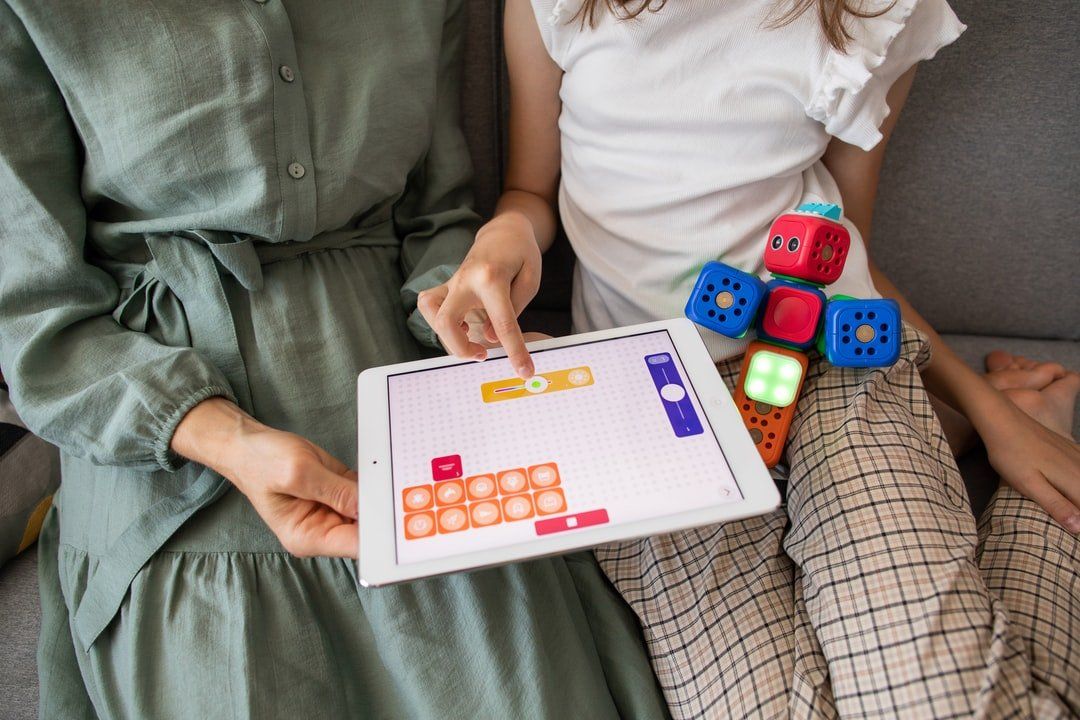6 Tips to Help a Child Diagnosed With Autism Thrive
December 22, 2021
If you have a child diagnosed with autism these excellent tips will help them to thrive. Read about the practical steps you can take today to help your child.
If your child is diagnosed with autism, you're well aware of the challenges that autistic children can face: language difficulties, attention issues, anxiety, depression, social isolation, and more.
As a parent to such a child, it can be heartbreaking to witness these struggles. Undoubtedly, you're willing to try anything possible to
help your child thrive.
Fortunately, we have some strategies for you. Here are seven tips to help a child diagnosed with autism.
1. Prioritize Structure
Autistic individuals generally struggle with spontaneity. They're often rigid in their behaviors and can have difficulty adjusting to changes. As such, as the caretaker of an autistic child, you should prioritize structure in your child's life.
Set a schedule with well-defined starts and ends. Do away with outside distractions as much as possible. Do things in ways that your child is comfortable with, introducing new methods and ideas slowly over time.
Flexibility doesn't tend to be an autistic individual's strong suit. Generally speaking, rigidity is ideal. This isn't to say that you should never be spontaneous; you just need to be mindful of how it will affect your child.
2. Be Visual
For children who struggle in developing language, the spoken word can be difficult to understand. As such, you can't just speak to your child; you need to use additional aids to help facilitate communication.
Perhaps the best way to do this is to use visuals. Pictures, videos, and hand motions can go a long way in helping an autistic child to understand new words and phrases.
So, for instance, you could give your child flashcards with pictures and words on them. Go through each card and repeat the word contained, all the while pointing at the picture on the card. Over time, your child will start to understand what each word conveys.
You could also build a visual schedule. In other words, create a schedule for your child, complete with pictures to help them understand each task.
Videos are self-explanatory. No, you should play them all of the time. However, educational videos revolving around letters and numbers can help your child get the hang of the written language.
In short, don't just talk and expect your child to pick things up. Autistic children generally require a little extra effort in this department.
3. Pursue Social Situations
Social challenges are prominent in kids and students with autism. This is due to troubles with understanding nuanced and non-verbal communication.
Unfortunately, this aspect of the condition can have the largest negative effect on a child, as it can leave them feeling lonely and alienated. In short, it often prevents autistic children from fitting in with their peers.
Now, as the parent of an autistic child, you might have a notion to protect your child by keeping them away from social situations. However, this is the exact opposite of what you should do. Instead, you should pursue social situations on a regular basis, as doing so will help your child to pick up on nuanced manners of communication.
Take your child to the playground so that they can play among other kids. Have them enrolled in a school so that they have regular contact with peers. Make them try new things on their own, but don't do too much too fast.
Doing this can feel overwhelming in the short term. But with continued exposure, your child will develop these much-needed skills. The alternative is to shield your child from such exposure, in which case, your child may never develop socially.
4. Be Patient
When it comes to social communication, children with autism tend to need more time in order to absorb information. As such, when talking to your autistic child, make sure to be patient.
Give your child a good 5 to 10 seconds to respond before repeating what you said. If you repeat too quickly and push too much, you could overwhelm your child, making them feel self-conscious.
In essence, let your child move at their own speed. Over time, they'll become better at processing verbal communication, thus allowing for smoother communication overall.
5. Be Kind
Autistic children usually struggle with sensory overload. This often presents itself as misbehavior, as the child might start screaming, throwing things, or acting out in another manner.
Regardless, you as the parent need to be kind. Instead of yelling and speaking in a demeaning way, stop and think logically about what your child must be going through. Practicing empathy is important, as it validates your child's feelings and helps them with their self-esteem.
6. Have Your Child Work With a Tutor
Because autistic children have such different needs than neurotypical kids, they often struggle with in-class learning. This is because teachers don't always teach in ways that cater to autistic children.
This is where a one-on-one tutor can be highly beneficial. By using a tutor trained to work with autistic children, you can make sure that your child is getting the instruction they need and deserve. The instruction can be tailored to your child's needs, ensuring the best outcomes possible.
Regardless of where your child is on the spectrum, there is a tutor in your area that can help. Use a search engine to research "tutors for autistic children" and see what you can find. Or, if you're interested,
utilize our services.
Is Your Child Diagnosed With Autism?
Is your child diagnosed with autism? Looking for support for autistic children? If so, you needn't look any further: we here at My Learning Ally can help.
We provide a range of services to cater to an autistic child's learning needs. Whether you need education consultation, education coaching, or even an education advocate, we're the people to see.
Contact us now to discuss your needs!

Are you frustrated after failing to reach and teach children with ADHD after trying every teaching technique you can think of? It can be difficult to know how to adapt your teaching style to help children with ADHD to have the best possible learning experience. Thankfully there are several strategies that you can make use of to help all children to have the best possible education. If you're wondering how to get better at teaching children with ADHD, read on and we'll tell you what you need to know. Understanding How Children With ADHD Learn the Best One of the first things to recognize about youth who have ADHD is that they seek novelty. Their attention naturally orients towards high-interest kinds of activities. This is why they thrive in learning situations where the curriculum is engaging and active. In order to offer children this opportunity, consider embracing activities that involve physical movement and motor activity. For example, if you are teaching children with ADHD about reading street signs, you should invite the child to be active in order to practice obeying what the signs say. You should also try to give the child options to choose from. By letting them have options, they have more freedom to be curious. This is important because it gives them chance to lean into their strengths in order to learn and grow. Children with ADHD struggle in situations where they get bored, such as while they're waiting for a teacher to draw out instructions for an activity on the whiteboard. If they need to wait for their turn to complete a task, they'll need more stimulation than other children will. They also have a need to feel competent at what they're doing. This is why you should make a point of rewarding the child you're working with by offering things like badges, prizes, high fives, and opportunities for leadership. Teaching Children With ADHD by Recognizing Their Social Needs and Challenges Make sure that you make a point to help children with ADHD to sense their relationships with others. Since social interaction is usually their most valued kind of stimulation, it is imperative that you offer kind support and individualized attention. Kids with ADHD also like to see the emotional responses from others. This is why it's common for them to be attracted to kids who are known to be troublemakers. Many teachers often don't realize that their angry and aggressive responses to children with ADHD who are causing trouble only serve to reinforce the behavior that the teachers are trying to stop. Instead, it's a better idea to be calm and unemotional when trying to redirect a child who has ADHD. Top Strategies Teaching Strategies for Children Who Have ADHD There are many different strategies for children with ADHD that can support them to have the best possible learning experience. Here are several of the most important things that you can do to help them. Match Their Skill Level You should first make sure that you're assigning schoolwork that matches a students' skill level. The reason for this is that they will usually want to avoid classwork that is too difficult to do or that is too tedious for them. Give Many Options You should also give the children as many options as you can. For example, you could offer them a list of ten activity choices for practicing math equations. You might consider using flashcards, writing on the whiteboard, or on their digital device. Visual Reminders Are Important Another of the great strategies for children with ADHD is to provide visual guidance. If you're going to explain a skill such as telling the time, do this by using an overhead projector or a whiteboard in order to explain the activity's instructions. Present Important Concepts in New Ways You could also start finding engaging ways to display important ideas that you want children to work with. One way to do this is by writing these concepts onto bright posterboard which you hang up around the classroom. Encourage Group Participation When you encourage your class to participate as a group, you help children with ADHD to be more engaged in what they're doing. You can do this by requesting students to write responses to exercises on a dry erase board, having students speak responses to questions in unison, and encouraging your class to raise their hands if they agree with something that you say. Go Out of Your Way to Offer Accommodations for Children With ADHD There are many children who will need special accommodations in order to help them to learn in the best way possible. Some of these accommodations could be more complex. Other types of accommodations are straightforward enough that schools for children with ADHD can easily offer them. This might include things like keeping an eye on a student's work or creating a plan to assure that they don't fall behind in class. You should also try giving students more time on the tests they're taking, offering shorter assignments, and breaking longer assignments into smaller segments. There Are Many Easy Ways to Support Children With ADHD Once you know how to start teaching children with ADHD, it's easy and fun for you to do. Many teachers don't understand the unique needs that children with ADHD have. Once they recognize their unique needs, it's much easier to create situations where all of their students can thrive. It's important to recognize that you're not alone in teaching children with ADHD. This is why we offer various services that are tailored for each person who we work with. If you want to support children with ADHD who you work with in the best possible way, please visit our services page in order to find out how we can help you.

The unique parenting journey of a special needs child is a path that is often difficult to navigate. It's a path that may involve different treatments and interventions. It's not what you expected. You listen to the specialists, read all the books, and learn to understand your special needs child. Yet, you may still second-guess the important role that you play in your child's special needs education. You shouldn't. You are your child's expert and greatest supporter. As the parent, you have the most complete understanding of your child's physical, emotional, and social development. Your family dynamic is unique. This dynamic is the continuity in your child's life. Sharing family information may give insight into what is needed in the classroom environment. Involvement in your child's special needs education will make a positive difference in the overall learning experience. So how do you get involved? Learning the educational options available and choosing the best approach to meet your child's education is a place to start. Special Needs Education Special Education is a broad term that refers to services that can be provided for your child. This approach to instruction should address the specific needs of your child's disability. The public school system in your area will determine access and opportunities for your child. Educational standards are also designated by your public school system. Adaptations for your child's physical or movement needs will be given as deemed necessary. This does not mean that your child will be in a special education or a resource room all day. According to the Individuals with Disabilities Education Act (IDEA), children who receive special education services should be in the least restrictive environment. Your child should be learning in the same classroom as other children. This will be made accessible with the appropriate accommodations. Individualized Education Plan (IEP) The Individualized Education Plan is covered under the Individuals with Disabilities Education Act. Teachers, parents, administrators, and other school personnel work as a team to create an educational program. This program is developed to meet the individual needs of the child. The IEP evaluates a child's current educational performance. This will take a look at the special needs of the child, how those needs affect involvement in the classroom, and learning outcomes. The IEP includes reasonable annual goals for the child broken down into short-term objectives. These benchmarks tackle physical, behavioral, or social needs, as well as academics. Any supplemental services or classroom modifications needed to assist the child will also be listed on the IEP. Parental involvement is required at the annual IEP meeting, which can be intimidating. But remember, you are the most important member of your child's educational team. You know your child best. Take the opportunity to ask questions and give input to customize a learning experience that fits your child. The 504 The 504 plan was established in 1973 and is a section of the U.S. Rehabilitation Act. It provides accommodations for students with physical or mental impairments within a regular classroom setting. When a student is not eligible for special education services or an IEP, a 504 plan will provide the modifications for academic success. Like the IEP, parents are part of the 504 team, and accommodations are reviewed annually. With a 504 , a parent can call for a plan review at any time to evaluate academic concerns or request other appropriate changes. Your involvement in the process will assist in customizing your child's educational experience. This can ensure your child's academic and social success. Parent as Educational Partner There is no one more invested in your child's success than you, the parent. You understand your child's specific requirements to function happily in life. Embrace your role as an educational partner and become a proactive parent. Through interactions and observations of your child, you can share changes or discoveries with the education team. By sharing this information, you offer the educators insight into behaviors that may not be observed in the classroom. Your continued involvement as a parent will increase your child's chance for personal and academic success. Development The role of parents in special needs education is to assist in helping your child's development. You understand there are many challenges ahead, but there will also be many triumphs. The developmental path may not be typical, but you want your special needs child to have the support necessary to meet as many milestones as possible. Communicate with your education team. Let the teachers know you are invested in supporting classroom efforts at home. Partnering with your child's teachers will reinforce the learning efforts on both sides. You understand that your child's development may not be a straight line. Know that each step achieved by your child is an extraordinary success. Advocate All that you do for your child comes from a place of love and caring. Advocating for your child requires research and explaining the disability. You will need to have many conversations with each professional involved in your child's life. This can be exhausting, yet you soldier on. As the parent, you believe in your child and know you must act on their behalf. As an advocate, your parental involvement in special needs education will give the teacher a better understanding of your child. Through advocacy, you will establish the foundation for future conversations. This will build a cooperative relationship that benefits your child and helps them grow. You Are Not Alone As a parent, understanding the pathway of a special needs education for your child is difficult. Yours is not a typical road of parenting. You may worry and second-guess decisions. There may be many potholes along the way, making you feel unsure and discouraged. You are not alone. Aliada Educational Advocacy, My Learning Ally , offers support and consultation for parents learning to navigate the educational system for a child with special needs. Experienced consultants are available to listen to your concerns and work with you to find the best solutions for your child. Reach out to us . We are here to help.


